Deer are herbivores, and they typically eat several times a day. The frequency of how often do deer eat depends on various factors such as the season, availability of food, and the deer’s age and health.
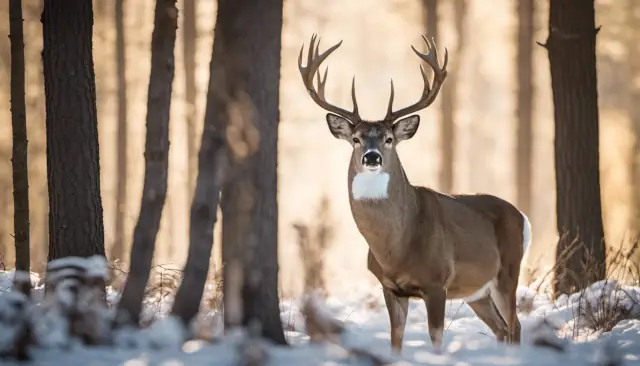
Contents
How Often Do Deer Feed
Deer are known to be pattern feeders, typically feeding about 5 times in a 24-hour period. Their feeding times are rhythmic.
Deer eat primarily during five feed times throughout each day.
- Early morning, often an hour or two around sunrise
- Late morning
- Midday
- Early evening, often an hour or two near sunset
- Around midnight
Daily Feeding Routines of Deer
I’ve observed that early morning and early evening are often the best times for deer to feed, with the former being particularly prime feeding time. As creatures that are more active during dawn and dusk, these feeding times fit well with their natural activity patterns.
Seasonal Eating Habits
It’s important to understand the nutritional requirements of young and mature deer vary throughout each season. All deer need water, protein, fats, carbohydrates, calcium, phosphorus, sodium, and fiber, but their need for specific nutrients might change depending on the time of the year.
In spring, does require additional nutrients for their growing fawns, while mature bucks need to recover from the depletion of the winter and start growing new antlers.
During summer, both young bucks and does will be focused on consuming more high-quality forage that provides the energy required for antler growth and lactation.
Fall Hunting Season
In the fall, during hunting season, bucks shift their focus on mating and less on eating, while does are still focused on gaining weight to prepare for the winter.
Winter brings about scarcity of food, and deer adjust their feeding patterns accordingly, primarily consuming woody browse to survive until spring.
Being aware of these seasonal feeding habits can help in better understanding whitetail feeding times and contribute to successful management or hunting strategies.
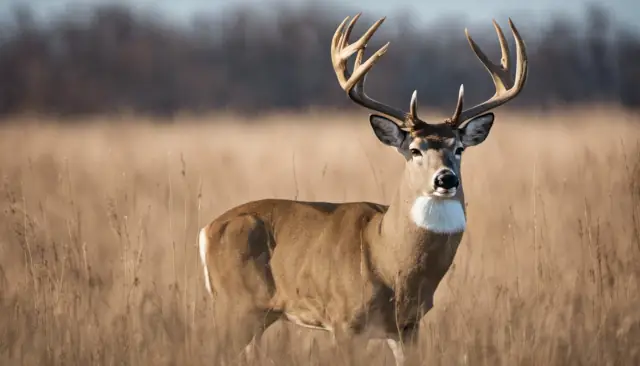
Mature Deer Diet Key Components
Animal and Plant Food Sources
In their natural habitats, deer primarily depend on plant-based food sources. Acorns from oak trees serve as a significant part of their diet, especially during the fall season or hunting season.
Besides acorns, corn is another reliable food source for any deer herd. Grass is an essential part of their diet, which they also depend on throughout the year.
Deer also rely on various types of browse, nuts, fruits, and berries found in their environment.
Mature deer are also known to consume some animal-based food sources as well. For instance, white-tailed deer occasionally eat insects, bird eggs, and even small mammals when necessary.
Importance of Nutrients in Deer Diet
A balanced diet consisting of essential nutrients is crucial for deer’s growth, energy, and overall health. Key nutrients help maintain their health and support specific body functions during different seasons. For example, protein is vital for antler growth in young bucks and fawn development in does.
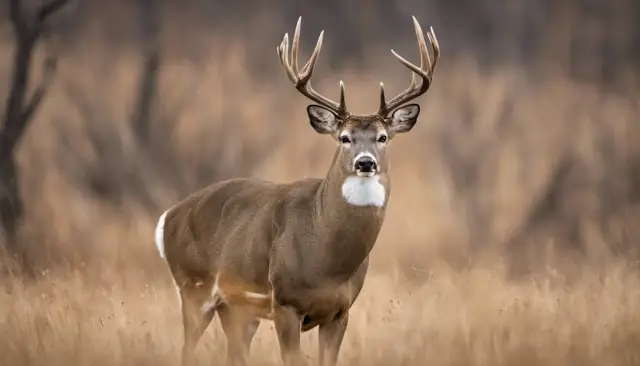
Foraging for Food: Preferred Plants and Trees
Deer are selective feeders, often choosing the most nutritious parts of plants and vegetation.
Forbs, or broad-leaf plants other than grass, are a significant component of a deer’s diet, especially during late spring and summer when they are highly palatable and easily digestible.
Forbs provide essential nutrients, helping deer thrive. Additionally, deer also forage on leaves, twigs of trees, woody shrubs, as well as beans, flowers, mast, mushrooms, fruits, apples, minerals, weeds, food plots, clover, foliage, pecans, and oat.
These food sources contribute further to their nutritional needs and enable them to maintain their health throughout the year.
Physiology of Deer Feeding
Deer Digestive Process
As a ruminant, deer have a specialized digestive system that allows them to effectively process the types of food they consume.
Their four-chambered stomach consists of the rumen, reticulum, omasum, and abomasum. When I observe deer eating, they tend to eat quickly to fill their stomach.
The process begins with deer only chewing their food enough to swallow it, then it enters the rumen, where bacteria break down the cellulose in the plant matter.
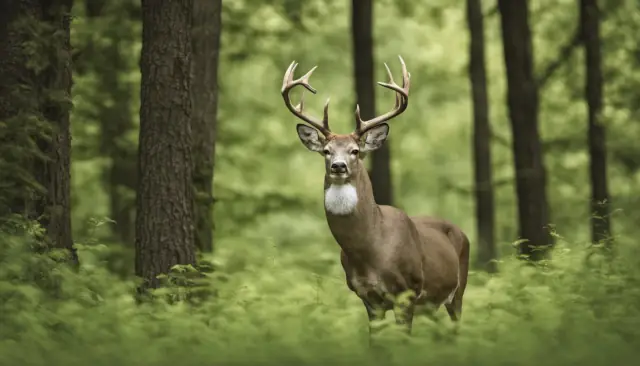
When deer are resting, they’ll often regurgitate some food from their rumen to chew it again, known as chewing their cud, which helps break down the food for ongoing digestion.
To handle a variety of plant-based foods, deer produce a robust saliva that can neutralize tannins, which are compounds that can be harmful and disrupt digestion. This adaptation protects their sensitive digestive system and allows them to maintain a healthy diet.
Anatomy and Role of Deer’s Teeth in Feeding
Deer have teeth that are well-suited for their herbivorous diet. Unlike many other mammals, deer do not have upper incisors. Instead, they have a hard upper palate, which they use to strip leaves and twigs from plants.
The lower incisors of deer work in conjunction with the upper palate to snip off their preferred food sources. Additionally, deer have premolars and molars on both the top and bottom jaws, which are used to grind and crush the plant material they consume.
These teeth play a significant role in their feeding behavior, as deer need to effectively break down the plant matter in their diet to obtain essential nutrients.
As ruminants, it’s important that deer are able to effectively grind their food, as the smaller particle size helps improve the efficiency of their digestive system.
A combination of the deer’s unique teeth and chewing their cud contributes to a well-functioning system that provides them with the healthy protein and nutrients they require.
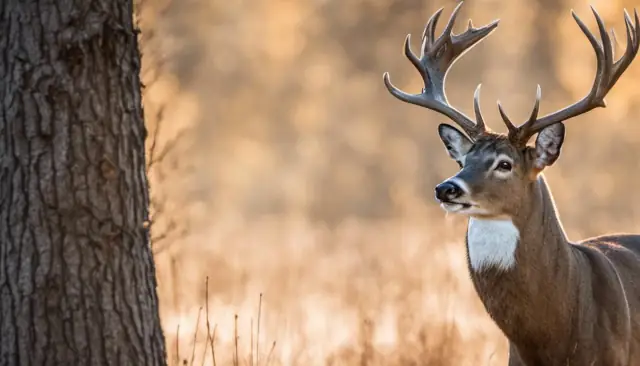
FAQs: How Often Do Deer Eat
How frequently do deer need to eat?
Deer need to eat every day to maintain their health. Deer typically consume 6 to 9 percent of their body weight daily.
Do deer have a preferred time to forage for food?
Yes, deer tend to forage more during dawn and dusk, but their specific feeding times will vary depending on factors like availability of food, habitat, and predators.
How do seasonal changes affect deer’s eating habits?
Seasonal changes significantly affect the deer’s eating habits and deer behavior. The availability of food differs throughout the year, and deer adapt to these changes to maintain their nutritional intake.
Do weather conditions influence when deer feed?
Weather conditions do indeed affect the feeding habits of deer. Extreme weather events like strong storms or heavy snowfall can limit their foraging ability, forcing them to rely on stored body fat.
What are common food sources for deer during different seasons?
Deer eat a variety of plants, nuts, fruit and crops. Common food sources for deer during different seasons include new plant growth, grasses, and forbs in Spring and Summer, acorns, other mast crops, and late-season fruits in the Fall and Woody plants, twigs, and bark in the winter.